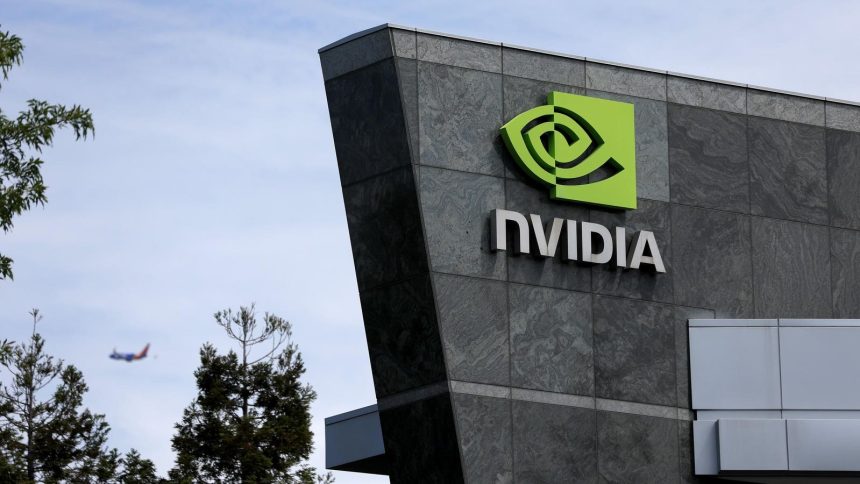In recent years, artificial intelligence has moved from the realm of imagination to possibility and is poised to be one of the most significant innovations over the coming half-century. While the internet will likely remain the most critical innovation for generations, AI is still, in all probability, a game changer. Like the early days of the internet, the road to maturing technology and best use cases will be longer and bumpier than many investors may believe today.
NVIDIA has been the perfectly positioned company powering AI computing and has been picked by the investment world as the primary beneficiary of a new world controlled by computers. In just two years, NVIDIA’s market cap has grown massively, putting the company among the most valuable companies in the world, including Microsoft and Apple. At first, NVIDIA was adding a trillion dollars in market capitalization over months, but the last trillion of growth came in just a matter of weeks.
In the early days of the internet, Sun Microsystems and Cisco exploded in value and size as the internet entered the mass consciousness of the population. These companies’ technologies and products, like NVIDIA today, were literally providing the technological plumbing of the internet, as NVIDIA drives AI infrastructure today. Investors’ cash is piling into the darlings of this developing technology.
Phases Of Transformative Technology
The internet and AI revolutions share so much in common; the parallels are clear if you have studied market history or, better yet, were investing through the 1990s and early 2000s. Over the last 100-plus years, there have been many game-changing innovations, and with each one, distinct phases to the investment cycle. AI seems to be following the same familiar investing cycle of all major innovations of the past.
Phase 1: Early investors see potential for a new technology and invest in companies most likely to benefit. These investors know that years, potentially a decade, may pass before their investment thesis comes to fruition. These investors are insiders or investors with a very long-term outlook. Investors at this early phase will not become sellers based on price; they hold until the investment thesis is either realized or they are certain they were wrong.
Phase 2: The technological potential Phase 1 investors identified early make significant progress, drawing in additional sophisticated investors who see imminent potential and begin taking positions in companies that are beneficiaries of the new technology. In this phase, the technology has been developed but is not widely used or available yet. This phase also introduces significant volatility in the stock price as there are always substantial delays, unforeseen challenges, and higher costs. Often, issues outside the control of operators of companies working to bring innovation forward include insufficient supply chains for scaling, a regulatory environment, or inadequate public and private infrastructure. Challenges in Phase 2 usually can only be resolved with time and significant investment.
Phase 3: Recognition of the masses happens when the public widely recognizes the importance of the new technology, accelerating development and adoption and attracting a large-scale inflow of retail investors into companies associated with the new technology, resulting in exploding market caps. This is the perfect phase to follow the trend and participate in what can be multiple years of explosive share price growth.
Phase 4: The transition from a new technology with limited adoption and use cases to mature companies with business models built around profiting from and delivering the now widely used technology. This phase is usually a tumultuous period for the companies that have been the leaders in the new technology, particularly early in the transition from Phase 3. Early Phase 4 is where crashes in high-flying companies usually happen. New competition and slowing growth usually lead investors to exit the original darlings because of increasingly unrealistic valuations and diversify out to product and service providers, building rapidly growing businesses using the new technology. This can result in share price losses for the high fliers of 50% to more than 90% over a very short period of time. Phase 4 can last years to many decades. It could be argued that the introduction of the internet is still in Phase 4 as new use cases and successful companies providing and relying on the internet adjacent products and services continue to sprout up regularly.
Looking at these often-repeated phases of the introduction of important innovation into the world, AI seems to be following the script. The script says we might be near the end of Phase 3, and NVIDIA and numerous names providing AI-related products and services have exploded in value, but eventually, investors will adjust expectations down, followed by their share prices.
Cisco Systems’ share price went parabolic in the late 1990s, like NVIDIA’s over the last year and a half, as AI entered the mainstream lexicon. However, the extent of NVIDIA’s price increase makes Cisco Systems look like the minor leagues in comparison.
Furthermore, specific AI use cases and companies dedicated to delivering on those for niche segments of consumers are just beginning to get started in AI technologies. AI is still very early in development. The technology will almost certainly prove invaluable to most businesses in the future, but this will only be possible with specialized AI tools specific to their businesses. So, the maturation of the technology seen during Phase 4 is still a long way off.
AI likely continues to present one of the best investment opportunities in the market for long-term holders. Still, the fate of the early beneficiaries like NVIDIA is far from certain. Cisco Systems is below its early 2000 high twenty-four years after dropping around 90% during the dot com crash as the internet moved from Phase 3 to Phase 4. Sun Microsystems crashed and no longer exists as a company, an outcome thought unthinkable by investors in the late 1990s. There could just as easily be an AI crash, and investors should plan for this potential and make sure to realize profits when the getting is good in these market manias and begin to look for companies innovating to serve specific industries with AI technologies as well as businesses that are improving or adding to the infrastructure and supply chains that will be needed as AI technology matures and adoption becomes more widespread.
We live in exciting times, and we are just scratching the surface of how AI technology will change our lives. From an investing perspective, there are many opportunities, but investors should use market history as a guide to set expectations and find the best opportunities where AI may be in the innovation cycle.
Read the full article here
















